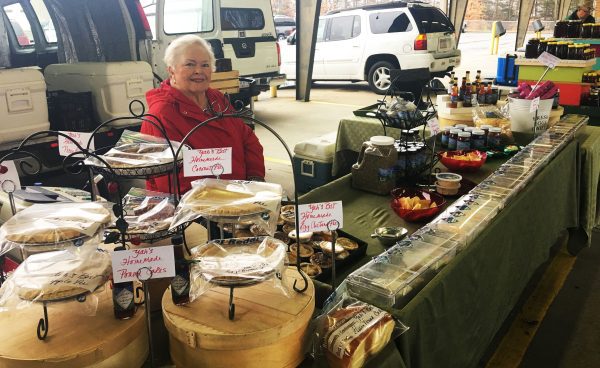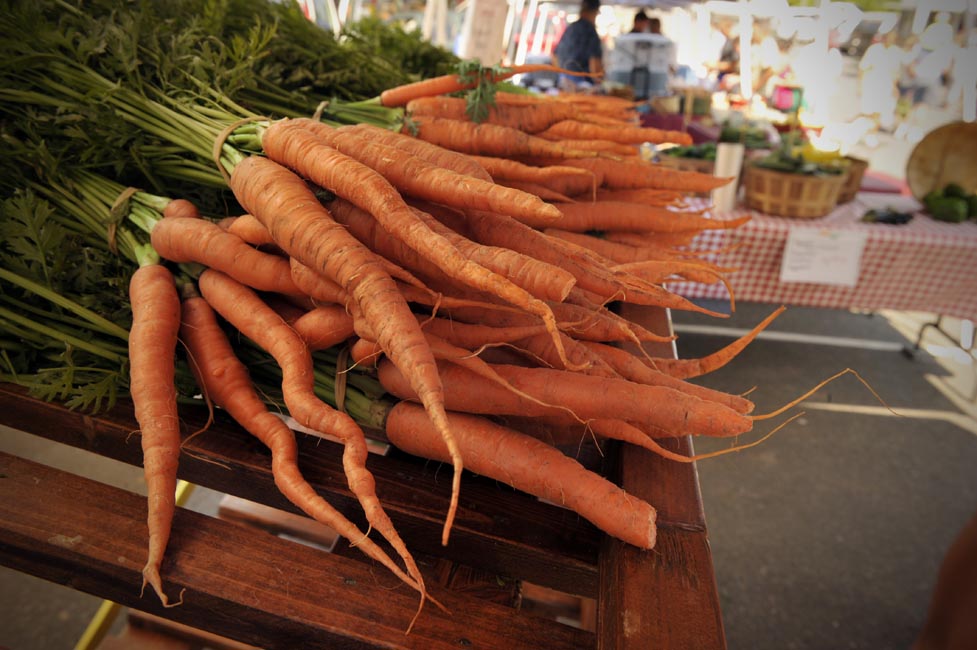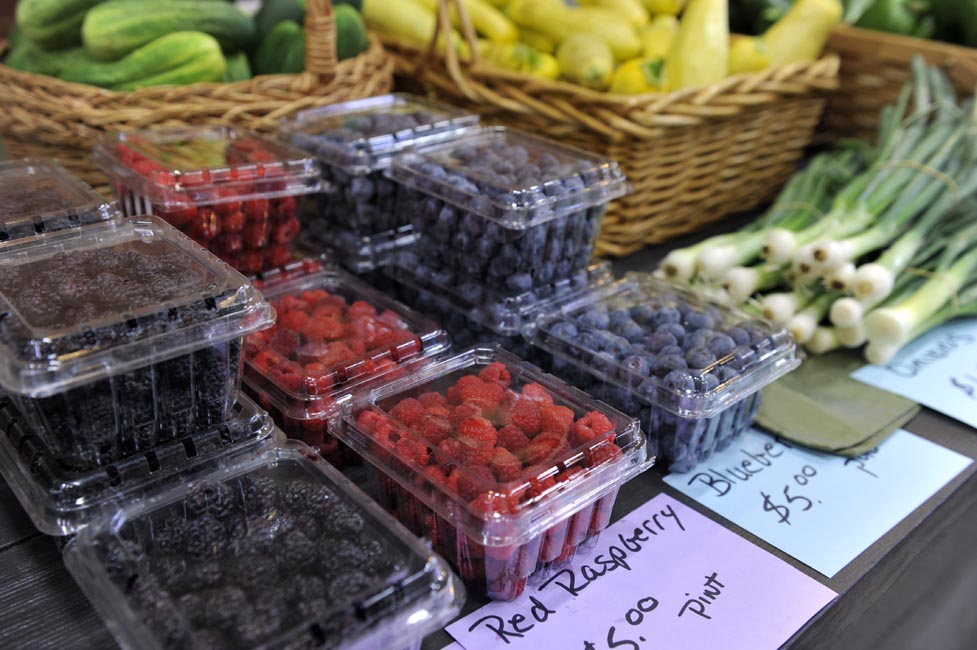Should Mecklenburg farms get more protection? Here’s how that could happen.

Seventh-generation farmer Bent Barbee of Concord’s Barbee Farms credits Cabarrus County’s Voluntary Agricultural District program as an important reason his 70-acre farm is still in operation after almost being lost to a road widening project in 2009.
|
WHAT’S NEXT? Leslie Vanden Herik of the Mecklenburg Soil & Water Conservation District said a next step is to develop a survey to get feedback from a larger cross-section of the agricultural community to determine interest. Interested parties can reach Vanden Herik at: Leslie.VandenHerik@MecklenburgCountyNC.gov. Mecklenburg Soil & Water Conservation District Board Supervisor Barbara Bleiweis would like to hear from those with questions about or and interest in learning more about VADs. Reach her at: BBleiweiss@gmail.com. LEARN MORE |
“When North Carolina Department of Transportation notified us about plans to widen I-85 and expand an adjacent access road, their preferred option was to realign the access road right down the middle of our land,” said Barbee, whose farm supplies vegetables to area farmers markets. But after an outpouring of support from the public and advocacy from the county Voluntary Agricultural District advisory board, NCDOT took another option, splitting off just one field. “Ultimately,” Barbee said, “our farm was saved.” (See 2010 article about the saving of Barbee Farms.)
He shared his story at a recent focus group meeting of people exploring the idea of creating a Voluntary Agricultural District program in Mecklenburg County. “Many people are surprised to learn that Mecklenburg County has more than 200 farms,” says Leslie Vanden Herik, conservation district manager for the Mecklenburg Soil & Water Conservation District, one of the groups hosting the meeting in January.
Of North Carolina’s 100 counties, all but 12 have a Voluntary Agricultural District. Among the state’s major urban counties only Mecklenburg lacks one. The goal of the districts is to raise the profile of agriculture as a key N.C. industry and to provide some protection for farms and farmers. Participation by farms is voluntary.
In Charlotte-Mecklenburg, interest has been growing for years in local foods, local food systems, farmers markets and the need to protect local farms and farmers, in order to provide local food.
For example, the City of Charlotte is in the midst of a year-long study of how to better support local farmers markets – and farmers – as a way to improve food access and encourage entrepreneurship. That study recently reported it has counted more than 25 farmers markets in the county.
From 1997 to 2012, the city study has found, Mecklenburg County lost more than half its farm acreage. During those years, though, Mecklenburg County agriculture sales increased by nearly 50 percent, compared to only a 37 percent increase for the Charlotte metro region. Mecklenburg ranks fourth in the metro area in farm sales.
[highlight]Charlotte explores ways to help farmers markets, farmers[/highlight]
A number of farming and food access groups were at the January meeting to discuss the possibility of a Voluntary Agricultural District in Mecklenburg County. Hosts were the Soil & Water Conservation District and the Charlotte-Mecklenburg Food Policy Council. Among the others attending were several area farmers plus representatives from the N.C. Agricultural Development & Farmland Preservation Trust, the N.C. Farm Bureau, the Carolina Farm Stewardship Association, the Piedmont Culinary Guild, Davidson Farmers Market, the Catawba Lands Conservancy and the Family Agriculture Resource Management Services.
 Carrots for sale at the Davidson Farmers Market in the north Mecklenburg County town of Davidson.The market requires vendors from no more than 100 miles away. Photo: Nancy Pierce
Carrots for sale at the Davidson Farmers Market in the north Mecklenburg County town of Davidson.The market requires vendors from no more than 100 miles away. Photo: Nancy Pierce
“For us,” said Nicole Peterson, a UNC Charlotte associate professor and vice chair of the Charlotte-Mecklenburg Food Policy Council, “having a strong local food system means understanding the issues facing farms, such as farmland loss through development, and we see this as something we’d like to address.” The Food Policy Council focuses on issues related to food and nutrition in the Charlotte area and advocates for healthy, sustainable and equitable food systems.
Here’s how a VAD works: A county opts to pass a Voluntary Agricultural District ordinance, tailored to that specific locality. The ordinance sets up a local Voluntary Agricultural District Advisory Council, which acts as an adviser to the local government on matters relating to farms, farming and the agricultural economy. Farms in the district may have priority for farmland protection grants and be protected from farm nuisance suits, such as when people move into new houses near a farm and sue over odors or slow tractors on the roads.
The N.C. General Assembly authorized Voluntary Agriculture District (VADs) programs – partnerships between farmers, agricultural landowners, land use planners and county commissioners – in 1985 as part of a farmland preservation enabling act. The VADs are administered at the county level and encourage voluntary farmland preservation.
Vanden Herik of the Soil and Water Conservation District said hosting the focus group was an effort to introduce the concept of VADs, gauge interest from the local agricultural community, identify community stakeholders and help explain the benefits of VADs.
Advocates of the voluntary agricultural districts believe efforts like the January meeting will help build grassroots support.
BENEFITS
Evan Davis, assistant director for the N.C. Agricultural Development and Farmland Preservation Trust Fund, a program in the N.C. Department of Agriculture, gave an overview of the VAD program and its benefits for farmers and their communities.
VAD programs, he said, provide a voice for farm, forestry and horticultural interests. Each county ordinance is unique, he said, but they have similar frameworks. The primary benefits of the districts, Davis said, are to make farming more visible, and to offer legal protections.
Member farms get special signage, and the VAD status is listed in the state’s Geographic Information System (GIS), which planners and developers use. If a public project calls for VAD land to be condemned, like the Cabarrus road-widening that threatened Barbee’s farm, the VAD advisory board is required to hold a public hearing.
 Berries for sale at Atherton Mill Farmers Market, which sells locally grown produce. It’s one of approximately 25 farmers markets in Mecklenburg County. Photo: Nancy Pierce
Berries for sale at Atherton Mill Farmers Market, which sells locally grown produce. It’s one of approximately 25 farmers markets in Mecklenburg County. Photo: Nancy Pierce
BARRIERS AND CHALLENGES
Farmland preservation in urban environs such as Mecklenburg is not without skeptics and challenges.
Developers’ growth plans and the region’s ability to attract new business and improved infrastructure projects can be stymied by VAD ordinances, making the right balance between growth and preservation a challenge.
Revenue-hungry local governments tend to see development of farmland into subdivisions or shopping centers as a way to expand their tax base, which can potentially slow tax increases to existing residents. But that thinking isn’t always accurate. Farmland preservation advocates point out that providing services to farms is usually less expensive than providing services to subdivisions or commercial areas, and the tax revenue doesn’t always make up the difference. For instance, a national study from the American Farmland Trust found that for every dollar paid in taxes by working farmland, the cost to provide government services was only 34 cents. But for typical residential development, for every dollar in taxes paid, providing services cost $1.15.
Further, the seven municipalities in the county plus Mecklenburg County government may have competing interests and be unable to agree on a VAD ordinance.
Yet some believe the time has come for Mecklenburg to have a Voluntary Agricultural District.
“VADs are tools that support farmers and broaden the conversation about preservation,” says Jared Cates, a community mobilizer with Carolina Farm Stewardship Association, a farmer-driven nonprofit advocacy group focused on farm and food policies, education and organic agriculture.
Cates said the City of Charlotte had shown support for exploring the possibility of the agriculture districts as part of the larger conversation surrounding the city’s work to update and reorganize its many development-related ordinances into one Unified Development Ordinance. Cates said he believes local government understands that planning to preserve land, farms and open space should be part of a long-term development strategy.
Advocates for the districts say nonfarmers share in the benefits when agricultural land is preserved. Agriculture is North Carolina’s largest industry, generating more than $68 billion of revenue annually.
“Increasing the visibility of local farms is an important component for our food system,” says Peterson of the food policy council. “Farming in the county is faced with certain challenges, and resolving these is not just beneficial to the farmers but for the entire food system. Awareness is a huge piece and is something that we at the food policy council can do a lot in terms of helping educate the public.”
Brent Barbee, the Cabarrus County farmer, heartily agreed.
“More than 300 people spoke on our behalf at the public hearing held (by the VAD advisory board),” he said. “I know that support made a difference in our ability to continue operating our farm.”
Michael J. Solender is a Charlotte-based freelance writer.
Michael J. Solender